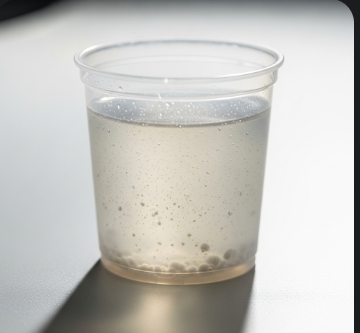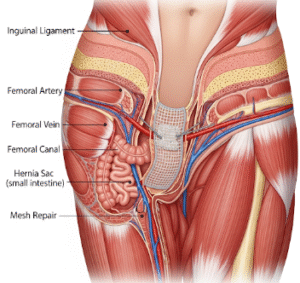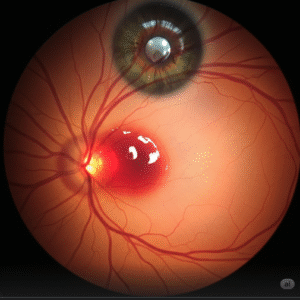Overview
Cloudy urine, medically known as turbid urine, refers to urine that appears milky, opaque, or less transparent than usual. While occasional changes in urine appearance can be harmless, persistent cloudiness may indicate urinary tract infections (UTIs), kidney or bladder issues, or metabolic disorders.
In South Korea, urology and nephrology clinics offer comprehensive evaluation and treatment for cloudy urine, using urinalysis, imaging, and advanced diagnostic tests to determine the underlying cause and provide targeted care.
Key Facts
Highlights:
➡️ Cloudy urine may be white, milky, or contain visible particles such as mucus, pus, or blood.
➡️ Causes can range from infections and kidney stones to metabolic conditions and dehydration.
➡️ Persistent cloudiness may be accompanied by pain, burning, fever, or changes in urination frequency.
➡️ Early diagnosis is important to prevent complications such as kidney damage or systemic infection.
➡️ South Korea provides modern diagnostic and treatment options, including minimally invasive procedures for urinary disorders.
What is Cloudy Urine?
Cloudy urine is urine that loses its normal clarity, often appearing turbid, opaque, or milky.
Key characteristics:
- Color: White, gray, or pale yellow with visible cloudiness
- Consistency: May contain particles, sediment, or foam
- Accompanying Signs: Painful urination, strong odor, or urinary frequency
- Duration: Can be temporary (due to dehydration or diet) or persistent (indicating medical conditions)
Cloudy urine is a symptom rather than a disease, signaling that further evaluation may be needed to identify the underlying cause.
What Symptoms are Related to Cloudy Urine?
Symptoms often accompanying cloudy urine include:
- Burning or painful urination (dysuria)
- Frequent urge to urinate or urgency
- Lower abdominal or flank pain
- Foul-smelling urine
- Blood in urine (hematuria) in some cases
- Fever or chills if infection is present
Highlights:
➡️ Symptoms help differentiate between urinary tract infections, kidney stones, or metabolic causes.
➡️ Persistent cloudiness with pain, fever, or blood requires urgent evaluation.
➡️ Early recognition helps prevent kidney damage or systemic complications.
What Causes / Possible Causes of Cloudy Urine?
Highlights:
➡️ Urinary Tract Infections (UTIs):
- Bacterial infections in the bladder or urethra often cause cloudy, foul-smelling urine with burning sensation.
➡️ Kidney or Bladder Stones:
- Crystals or stones can lead to turbid urine, pain, and hematuria.
➡️ Dehydration: Concentrated urine may appear cloudy and dark.
➡️ Proteinuria: Excess protein in urine from kidney disease can cause foamy, cloudy urine.
➡️ Sexually Transmitted Infections (STIs): Gonorrhea or chlamydia may cause cloudy urine with discharge.
➡️ Diet or Medication: Certain foods (milk, asparagus) or medications may temporarily change urine appearance.
➡️ Metabolic Disorders: Diabetes or other metabolic conditions may lead to excess glucose or ketones in urine, causing cloudiness.
➡️ Mechanism: Cloudiness results from presence of bacteria, pus, crystals, proteins, or other particles in the urine.
When Should I See My Doctor?
Highlights:
➡️ If cloudiness persists more than a day or two, especially with pain, burning, or odor.
➡️ If accompanied by fever, chills, or lower back/flank pain, urgent evaluation is needed.
➡️ If blood is present in urine, prompt medical attention is necessary.
➡️ For recurrent episodes, assessment is required to rule out chronic kidney or urinary tract disorders.
➡️ Early consultation ensures accurate diagnosis, targeted treatment, and prevention of complications.
Care and Treatment
Treatment depends on the underlying cause of cloudy urine:
Highlights:
➡️ Urinary Tract Infections:
- Antibiotic therapy based on culture and sensitivity
- Increased fluid intake to flush bacteria
➡️ Kidney or Bladder Stones:
- Pain management and hydration
- Minimally invasive procedures (lithotripsy or ureteroscopy) for large or obstructive stones
➡️ Proteinuria or Kidney Disease:
- Monitoring kidney function and managing underlying condition
- Medications such as ACE inhibitors for protein reduction
➡️ STIs: Appropriate antimicrobial therapy and partner treatment
➡️ Lifestyle Measures:
- Adequate hydration
- Good hygiene practices
- Dietary adjustments to reduce stone formation risk
➡️ Follow-Up Monitoring: Regular urinalysis and kidney function tests to ensure resolution and prevent recurrence.
Treatment Options in Korea
South Korea provides specialized care for patients with cloudy urine, including:
Highlights:
➡️ Urology & Nephrology Clinics: Comprehensive assessment using urinalysis, urine culture, imaging, and blood tests.
➡️ Advanced Diagnostics: Ultrasound, CT, or MRI for detecting stones, infections, or structural abnormalities.
➡️ Minimally Invasive Procedures: Lithotripsy, ureteroscopy, or catheterization for obstructive conditions.
➡️ Multidisciplinary Care: Collaboration among urologists, nephrologists, and infectious disease specialists.
➡️ Medical Tourism Support: Multilingual consultations, diagnostics, and treatment planning for international patients.
➡️ Preventive Counseling: Hydration strategies, dietary guidance, and lifestyle modifications to reduce recurrence.













